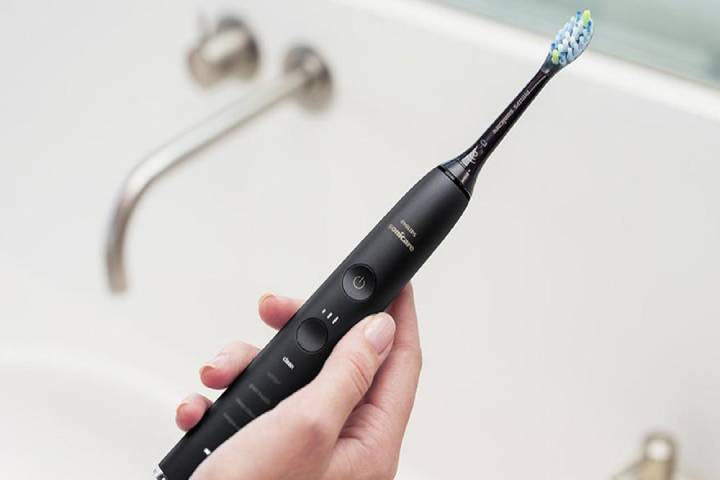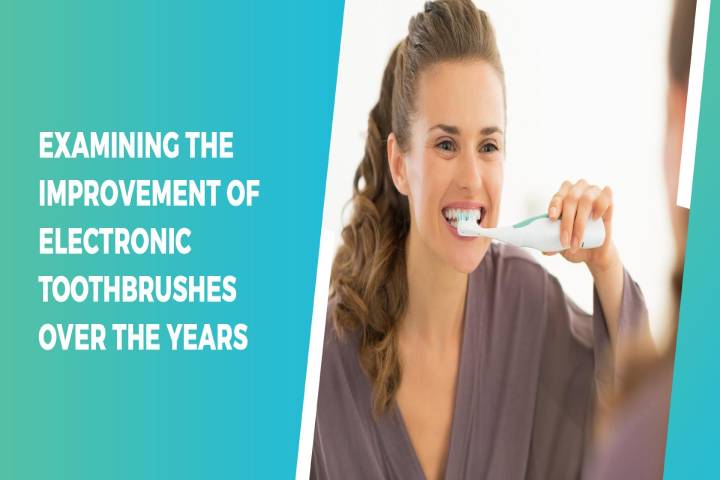The most basic yet vital component of dental hygiene is the humble toothbrush. Relatively uncomplicated compared to mint mouthwash, fluoride toothpaste, and dental floss, the modern toothbrush is a simple yet useful tool that works wonders for the appearance and health, and strength of teeth.
The earliest version of a toothbrush can be traced back to 3000 BC when ancient man used chew sticks taken from plants to clean their teeth. In countries such as India, the thin stems and branches of medicinal plants and herbs such as neem, remain an effective natural toothbrush.
The prototype for a toothbrush originated in China around 1498, when people attached coarse animal hair to sticks and used them to clean their teeth. As we know it today, the bristled toothbrush was invented in 1938 by the American company Dupont and contained nylon bristles. This model became popular after World War II and dominated the market through the majority of the 20th century.
Besides finding the right toothbrush, it is essential to go for regular dental check-ups; for a good recommendation, fix painful oral issues with the gentle dentist Friendswood.
1. When was the electric toothbrush invented?
Interestingly, the very first electric toothbrush was developed in 1939, shortly after the commercial introduction of nylon-bristled toothbrushes. It wasn’t until 1954 that the first usable electric toothbrush was made. The Swiss and French-manufactured Broxodent toothbrush began to be implemented by hospital patients with limited motor skills and functioning.
As you can expect, this model’s success was short-lived, for two main reasons – low charging and battery life and, predictably, lack of safety.
The performance of electric toothbrushes over the next four decades remained inconsistent, as did their certifications and protection regulations, and they remained a rarely used product.
Modern electric toothbrushes, which use ultrasonic technology, were developed in 1992. Called ”Ultrasonex”, they were approved by the American Food and Drug Association (FDA) for daily home use and deemed safe. Since then, electric toothbrushes have gone from strength to strength and established themselves as the preferred dental care tool for many of the global population.

2. How does an electric toothbrush work?
Electric toothbrushes apply the same basic principle as regular, manual toothbrushes but with a significant upgrade through modern technology.
The bristles of a toothbrush are instrumental in cleaning away plaque, dirt, and deposited food particles from the tooth surface and between teeth and the nooks and corners of the mouth. However, the effect is restricted by the limits of human speed.
Electric toothbrushes are battery-operated, and this enables their bristles to vibrate at a too-high frequency.
These micromovements do get not only do a better job of cleaning teeth but also emit ultrasonic waves and vibrations that are incredibly effective at getting rid of plaque and impurities, especially those that have collected over more extended periods or are stuck in awkward corners and crevices.
Many developers have experimented with sonic toothbrushes; however, the capabilities of these devices do not match up to ultrasonic versions. As per the FDA, a brush can be classified as ultrasonic when it operates at a frequency of 1.6 MHz or 192 million movements per minute.
The high-frequency waves, which are low in amplitude, do a significantly better job of breaking down plaque and bacteria chains.
3. What are the advantages of an electric toothbrush?
Simply put, the electric toothbrush is an improvement in all aspects of a regular manual toothbrush and offers all the benefits and so much more.
The benefits of an electric toothbrush include
- Much better cleaning and protection for teeth. Ultrasonic toothbrushes operate at a speed that humans cannot match and remove dirt and germs more thoroughly and faster.
- Wider reach and target area. Electric toothbrushes can work as far as 5mm below the gum line, without causing injuries and damage risked by a standard brush. They can also reach the very back of the mouth and narrow crevices.
- Easier to use. These devices are incredibly convenient and reduce the amount of effort put in by the user. Just let the machine do the work.
- Longer lasting than the average toothbrush. Most electric toothbrushes come with multiple replaceable bristle heads, and a single device can last two years if maintained properly.
- Time-saving and efficient. Electric toothbrushes do a better job of cleaning teeth in a shorter time, making them ideal for busy mornings when everyone’s hurry.
- Much better for sensitive teeth. Manual toothbrushes can cause pain and discomfort to patients with dentin hypersensitivity.
4. Typically, the two main criticisms of ultrasonic toothbrushes have been
- Lifespan
- Affordability
However, considerable progress has been made over the 21st century to alleviate these concerns. Today, electric toothbrushes are waterproof and require basic handling and care, making them sturdy and durable.
The slightly higher price of these devices is evened out by the numerous replaceable brush heads that accompany a device. Most ultrasonic toothbrushes come with brush heads that can last a couple of years.
This makes them a worthwhile investment, especially compared to regular toothbrushes that wear out and need to be replaced every couple of months.
The bottom line is that electric toothbrushes are the culmination of decades of innovation and development. They provide the effectiveness of traditional toothbrushes and much, much more.
On the whole, they serve as a comprehensive improvement on their manual counterparts and prove to be an intelligent investment thanks to their long lifespan and efficiency!
Brenda Hughes
Related posts
Leave a Reply Cancel reply
Hot Topics
Categories
- Ads (5)
- Animes (25)
- Artificial Intelligence (AI) (35)
- Augmented Reality (AR) (10)
- Automotive (9)
- Bitcoin (16)
- Blockchain (23)
- Business (244)
- Business Intelligence (3)
- Cloud Computing (23)
- Computer (127)
- Concrete Technology (1)
- Cryptocurrency (10)
- Cybersecurity (39)
- Data Science (9)
- Database (4)
- DevOps (6)
- Digital Marketing (76)
- Digital Workplace (14)
- Ecommerce (1)
- Education (28)
- Electric Vehicle (EV) (1)
- Electronics & Hardware (16)
- Entertainment (42)
- Fabrication (3)
- FAQ's (1)
- Finance & Marketing (47)
- Gadgets (34)
- Games (8)
- Gear (29)
- HTTPS (1)
- Industry (46)
- Information Technology (88)
- Internet (413)
- Internet of Things (IoT) (40)
- Job (25)
- Machine Learning (5)
- Marketing (92)
- Mobile Apps (21)
- Movies (11)
- Natural Language Processing (5)
- News & Trends (108)
- Programming (4)
- Science & Technology (233)
- Security (78)
- SEO (56)
- Services (36)
- Social Media (73)
- Software (97)
- Sports (1)
- Technology (304)
- Telecom (6)
- TikTok (5)
- Tours & Travels (9)
- Uncategorized (11)
- Virtual Reality (VR) (7)
- VoIP (4)
- Web Technology (42)
- Workforce (17)
- Workspace (6)



Stay connected